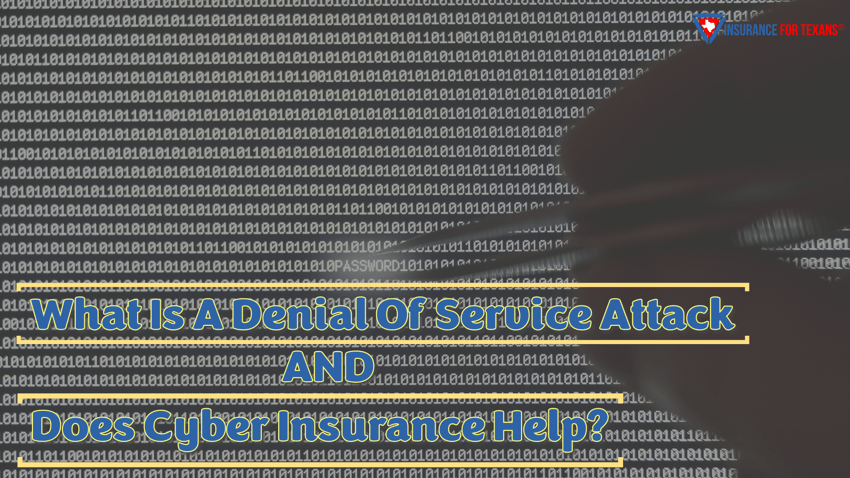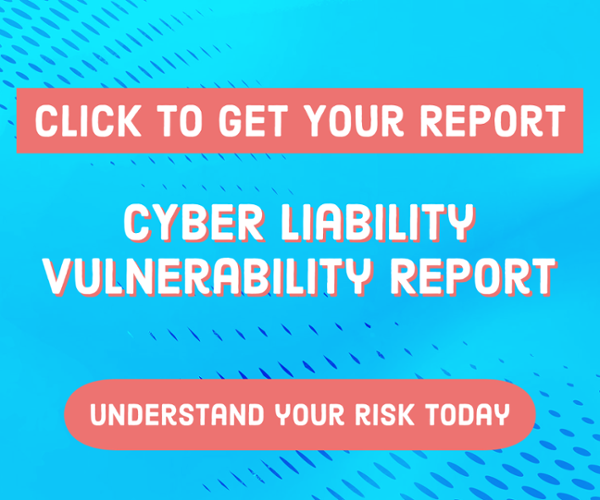Over the last year, businesses across the world have seen an increase in different cyber attacks on their infrastructure and livelihood. Some of the more common attacks like phishing, ransomware, and malware have become so commonplace that most Texas business owners have a grasp on how they work and what the potential consequences can be for their future. But the cyber punks don't stop with the well known attacks that many businesses have been preparing for. They are always expanding their repertoire of criminal activities to extract as much pain as possible from as many unsuspecting businesses as possible. One of the cyber attacks that you may be unaware of that is proliferating across Texas is a Denial of Service attack.
A Denial of Service attack (DoS) is a malevolent act aimed at disrupting the regular functions of a network, system, or service. By overwhelming these systems with a deluge of illegitimate requests or malicious traffic, attackers make the target services inaccessible to genuine users. Such disruptions can drastically reduce a website or application's performance, leading to potential significant financial and reputational losses. Texas businesses need to understand the potential ramifications financially of DoS attack on their business. What will you do if the intended users of your website or service are cut off due to attack traffic aimed at your business by malicious actors? Understanding the threat itself and how to take proactive measures is the first step reducing your risk from these types of attacks.
Common Types of DoS Attacks
Denial of Service attacks manifest in various forms. Some of the most common ones include:
- Flood Attacks: These attacks swamp the target system with excessive traffic, leading to reduced network speed or even a total shutdown. The SYN flood attack is a typical example where the attacker overwhelms the target with multiple connection requests.
- Buffer Overflow Attacks: By exploiting vulnerabilities in an application's coding, attackers flood its memory, often resulting in system crashes and potential control over the target system. Popular attack tools like Teardrop and Ping of Death fall into this category.
- Application Layer Attack and Volumetric Attacks: While the former targets specific resources within an application server (e.g., an HTTP service), the latter aims to consume all of the target's bandwidth by inundating the network with copious volumes of traffic. This malicious traffic aimed at a target server can render your business completely useless.
Understanding these can help businesses identify potential threats and safeguard their digital assets more effectively. All of these can manifest as volumetric attacks against your network resources like flood attacks, or exploit vulnerabilities with tools like Teardrop and Ping of Death. The goal is to either crash the system or take control over it, ultimately hindering legitimate users from accessing the services. Is your business prepared?

Network Traffic
Distinguishing between legitimate traffic and attack traffic is vital for online service stability. While legitimate requests showcase expected behaviors and patterns, DoS attacks often flood servers with abnormal patterns of requests. Notable signs of a DoS attack include slow network performance, lost connectivity, and suspicious IP addresses. This can compromise your network security.
To maintain service integrity, organizations should monitor network traffic for unusual spikes and implement protective tools like firewalls and load balancers. While it is impossible to completely eliminate malicious traffic headed at a target server, you can mitigate the risk of ongoing attacks with proactive means. Through proactive monitoring and the right defensive tools, the risks and impacts of DoS attacks can be considerably reduced.
The Importance of Cyber Insurance in the Age of DoS Attacks
As the risk landscape for businesses is constantly changing it's important for Texas business owners to have an understand the attack types that cybercriminals use as well as the potential financial losses that accompany them. The upsurge in cyber threats, notably Denial of Service (DoS) attacks, has underscored the importance of cyber insurance as a safeguard for businesses. This insurance is more than just a policy—it's a shield against the financial strain following cyber-related incidents. Let's unpack the multifaceted benefits of cyber insurance in greater detail:
1. Comprehensive Remediation and System Restoration: Upon experiencing a cyberattack, it's imperative for businesses to swiftly identify the breach's origin and implement solutions. Cyber insurance is designed to alleviate the financial weight of such endeavors. It covers costs related to:
- Incident Response: Engaging experts to ascertain the nature and extent of the breach.
- System Patching: Addressing and rectifying system vulnerabilities to prevent future incidents.
- Data and System Recovery: Whether it's retrieving lost data from backup sources, mending damaged hardware, or reinstalling compromised software, insurance aids in ensuring systems bounce back to full functionality with minimal financial repercussions.
2. Business Continuity with Interruption Coverage: The ripples of a DoS attack extend beyond immediate system disruption. For businesses, downtime translates to loss of revenue, disrupted operations, and potentially tarnished reputations. Here's where cyber insurance demonstrates its true worth:
- Compensation for Operational Halt: During periods when the business is unable to operate due to a cyber incident, the policy offers compensation, ensuring that the company remains financially resilient.
- Addressing Ancillary Expenses: The journey to recovery post-attack often comes with unexpected costs—from hiring external consultants for damage control to investing in advanced security measures. The insurance can absorb these additional expenses.
- Reputation Management: A cyberattack can damage a company's public image. Many insurance policies incorporate provisions that cover the costs of public relations campaigns or other reputation management strategies to restore public trust.
While you may not personally understand your server capacity or what a SYN Packet is, it is important to have a plan in place for that day the now common DoS Attack happens to your business. Having a Cyber Policy in place that covers a wide range of attacks to your business will make the difference between your business continuing to grow or even going bankrupt!
Taking Proactive Steps Against DoS Attacks
While cyber insurance offers a safety net against the financial implications of DoS attacks, businesses should also prioritize preventive measures. By consistently monitoring for abnormal traffic, implementing firewalls, using load balancers, and availing specialized DoS protection services, organizations can fend off many threats before they escalate.
Also, collaborating with cloud service providers like Amazon Web Services can further fortify a business's digital defense. Continuous vigilance, coupled with a strong cyber insurance policy, can ensure the uninterrupted and secure operation of business services.
As digital threats like DoS attacks become more sophisticated, businesses need a two-pronged approach for protection: robust security measures and a comprehensive cyber insurance policy. By understanding the nature of DoS attacks and the protective cushion that cyber insurance provides, businesses can navigate the digital realm confidently, ensuring that their operations and clientele remain unaffected by malicious threats.
To get started with a complimentary Cyber Liability assessment, simply click the button below. We can help you use that assessment to increase your business protection today.



